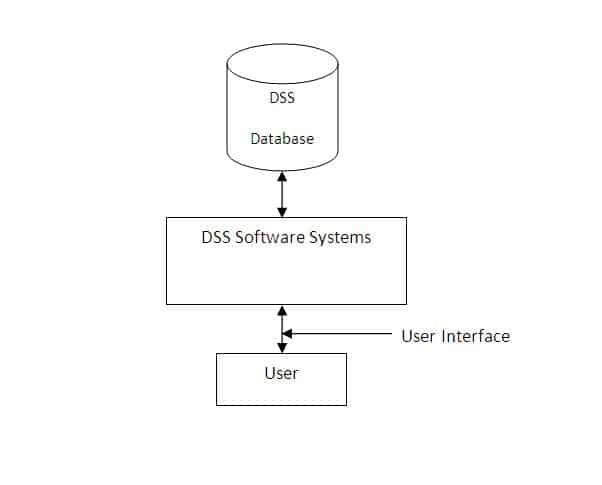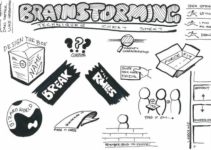What is Decision Support System?
A decision support system (DSS) is an interactive computer-based information system that, like MIS also serves at the management level of an organization. However, in contrast to MIS (that processes data), it processes information to support the decision making process of managers. It provides middle managers with the information that enables them to make intelligent decisions. A DSS in bank, for example, can enable a manger to analyze the changing trends in deposits and loans in order to ascertain the yearly targets.
DSS’s are designed for every manager to execute a specific managerial task or problem. Generally, they help managers to make semi-structured decisions, the solution to which can be arrived at logically. However, sometimes, they can also help in taking complex decisions.
Components of Decision Support Systems (DSS)
A decision support systems consists of three main components, namely database, software system and user interface.
1. DSS Database: It contains data from various sources, including internal data from the organization, the data generated by different applications, and the external data mined form the Internet, etc. The decision support systems database can be a small database or a standalone system or a huge data warehouse supporting the information needs of an organization. To avoid the interference of decision support system with the working of operational systems, the DSS database usually contains a copy of the production database.
2. DSS Software System: It consists of various mathematical and analytical models that are used to analyze the complex data, thereby producing the required information. A model predicts the output in the basis of different inputs or different conditions, or finds out the combination of conditions and input that is required to produce the desired output.
A decision support system may compromise different models where each model performs a specific function. The selection of models that must be included in a decision support system family depends on user requirements and the purposes of DSS. Note that the DSS software contains the predefined models (or routines) using which new models can be built to support specific type of decisions.
Some of the commonly used mathematical and statistical models are as follows:-
- Statistical Models: They contain a wide range of statistical functions, such as mean, median, mode, deviations etc. These models are used to establish, relationships between the occurrences of an event and various factors related to that event. It can, for example, relate sale of product to differences in area, income, season, or other factors. In addition to statistical functions, they contain software that can analyze series of data to project future outcomes.
- Sensitivity Analysis Models: These are used to provide answers to what-if situations occurring frequently in an organization. During the analysis, the value of one variable is changed repeatedly and resulting changes on other variables are observed. The sale of product, for example, is affected by different factors such as price, expenses on advertisements, number of sales staff, productions etc. Using a sensitivity model, price of the product can be changed (increased or decreased) repeatedly to ascertain the sensitivity of different factors and their effect on sales volume. Excel spreadsheets and Lotus 1-2-3 are often used for making such analysis.
- Optimization Analysis Models: They are used to find optimum value for a target variable under given circumstances. They are widely used for making decisions related to optimum utilization of resources in an organization. During optimization analysis, the values for one or more variables are changed repeatedly keeping in mind the specific constraints, until the best values for target variable are found. They can, for example, determine the highest level of production that can be achieved by varying job assignments to workers, keeping in mind that some workers are skilled and their job assignment cannot be changed. Linear programming techniques and Solver tool in Microsoft excel are mostly used for making such analysis.
- Forecasting Models: They use various forecasting tools and techniques, including the regression models, time series analysis, and market research methods etc., to make statements about the future or to predict something in advance. They provide information that helps in analyzing the business conditions and making future plans. These systems are widely used for forecasting sales.
- Backward Analysis Sensitivity Models: Also known as goal seeking analysis, the technique followed in these models is just opposite to the technique applied in sensitivity analysis models. In place of changing the value of variable repeatedly to see how it affects other variables, goal seeking analysis sets a target value for a variable and then repeatedly changes other variables until the target value is achieved. To increase the production level by 40 percent using the backward sensitivity analysis, for example, first, the target value for the production level can be set and then the required changes to made in other factors, such as the amount of raw material, machinery and tools, number of production staff, etc., to achieve the target production level.
3. DSS User Interface: It is an interactive graphical interface which makes the interaction easier between the DSS and its users. It displays the results (output) of the analysis in various forms, such as text, table, charts or graphics. The user can select the appropriate option to view the output according to his requirement.
A manager, for example, would like to view comparative sales data in tabular form whereas an architect creating a design plan would be more interested in viewing the result of analysis in a graphical format. The present-day decision support system built using the Web-based interface provides its users some special capabilities like better interactivity, facility for customization and personalization, and more ease of use.




